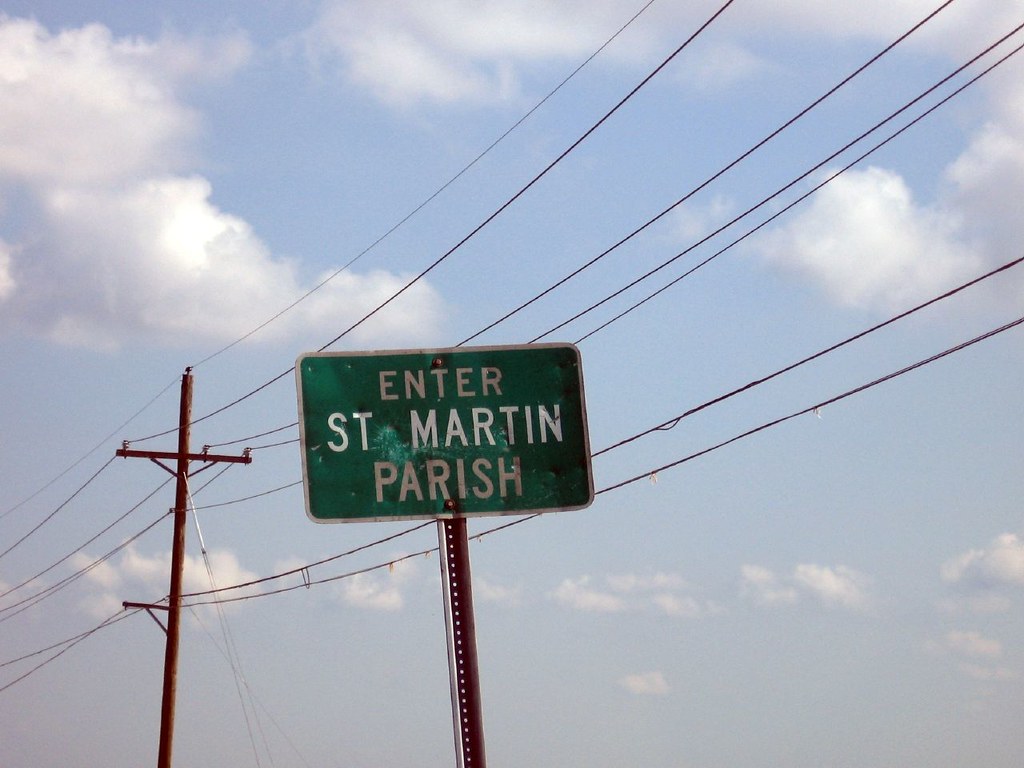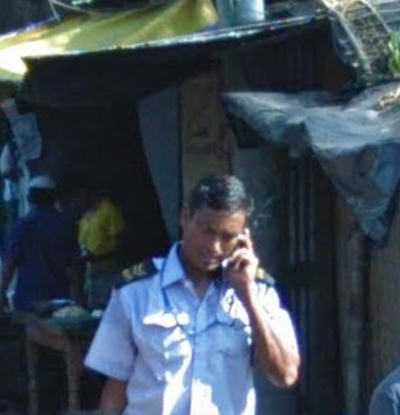Twelve Mile Circle explored the Ends of the Earth recently, including the southernmost tip of Bangladesh. However, more accurately, the article reached the end of mainland Bangladesh. In the course of my research I found a spot even farther removed in the Chittagong Division, a place called Saint Martin’s Island (map). I never knew it existed until then. It could have belonged to Myanmar (Burma) just as easily. In fact the island fell closer to Myanmar than to its own nation.
About That St. Martin Name

How odd to find another island of Saint Martin. It shouldn’t be confused with that weirdly divided island in the Caribbean. I enjoyed exploring that one a few years ago in person, recording border markers between French Saint-Martin and Dutch Sint Maarten. I’d also experienced the weirdly bifurcated Saint Martin Parish in Louisiana. Apparently things with that name attracted geo-oddities. Who knew?
The same saint underpinned both the Caribbean island and the Louisiana parish. They honored St. Martin of Tours. Christopher Columbus spotted the Caribbean instance during his second voyage in 1493. So it happened to coincide with the saint’s feast day, November 11, thus the name.
I saw earlier that certain locations discovered on December 25 sometimes came to be called Christmas so it didn’t surprise me to see a similar naming convention here. The same could be said for Easter Island too, I suppose. The European discovery in the Caribbean fell on St. Martin’s Day and Columbus named it accordingly
As for Louisiana

Similarly, Saint Martin of Tours inspired the name of the parish in Louisiana, albeit in a roundabout way. The town of St. Martinville, the seat of local government for the parish, described what happened in 1765:
“[Charles-Philippe] Aubry had also sent a French priest, Fr. Jean Louis Civrey, to accompany the Acadians and serve the Attakapas district, where he became the first resident curate. In his records, Civrey refers to his new home as ‘la Nouvelle Acadie’. He calls his new parish ‘l’Église des Attakapas (Attakapas Church)’ and later, ‘l’Église St-Martin de Tours (St. Martin de Tours Church)’, for which it is said St. Martinville is named.”
St. Martinville predated the parish, which then adopted the town’s name upon its creation in 1807.
Did Saint Martin’s Island in Bangladesh memorialize the same saint? Honestly, I never found out. It seemed likely. The Anglican Communion venerated St. Martin of Tours too. He would have been a familiar figure to British adventurers who named the island.
The Sainted One

Saint Martin lived during the Fourth Century and became a conscript in the Roman army. He converted to Christianity as a young adult around the time it became legal to do so in the Empire. The most well-known story recounting his pious acts involved an incident during his time as a soldier. A beggar dressed in rags on the verge of freezing to death sat by the side of the road. Martin removed his tunic, sliced it with his sword, and gave half of it to the beggar. That night God came to him in a vision and set him on a course that would guide him for the rest of his life. Martin became a conscientious objector, founded a monastery and eventually became Archbishop of Tours (now a city in France).
I’ll take a moment for an interesting tangent. The portion of the cloak retained by St. Martin became an important relic to the early Christian church and to the Frankish kings. In the Latin language a cloak of this type was called a “cappella.” The priest in charge of guarding the cloak became a cappellani. The modern English words chaplain and chapel both descended from the people and places designated to protect this sacred cloak. Indirectly, the musical style “a cappella” (in the manner of the chapel) descended from the same etymology.
He became the patron saint of an eclectic group of people, both soldiers and conscientious objectors, as well as the poor, tailors and winemakers. The Basilica of St. Martin in Tours, France marked his tomb (map) and became a place of pilgrimage.
Onward to Bangladesh

Nobody lived on the Bangladeshi island of St. Martin’s until about 250 years ago when Arabian sailors occupied it. The British came soon thereafter and took over. It wasn’t a large place, just 8 square kilometres (3 square miles) at high tide and a good bit less at low tide. It was also the only coral island in the entire nation of Bangladesh. St. Martin’s became its English name of course. In Bengali it went by a phrase that translated into something like Coconut Island.
Most people who moved there became fishermen. They prospered quite nicely until recent decades. Since then, a number of tourist hotels and resorts opened, stressing the island ecology and the coral reefs around it. Fish populations declined. The reefs began to erode. The island began to shrink.
Still it seemed to be a mostly idyllic place where tourists came to escape a hectic pace found elsewhere. Ferries crossed from Cox’s Bazar on the mainland, a two hour ride away. Electricity didn’t exist except for the generators at some of the larger hotels. No motorized vehicles were allowed, the only mechanized transportation being pedal-powered rickshaws. Wikitravel noted “not even a hint of nightlife.”
Chera Dwip

Even farther south, the true southernmost tip of Bangladesh, culminated at an area called Chera Dwip (or Chera Dip, or Chera Deep). At low tide Chera Dwip attached to St. Martin’s Island. At high tide it separated and formed its own distinct island. Tourists enjoyed the area although they needed to be careful to keep from being stranded there when the tide rolled in.
The Stalker

Unbelievably, the island included Google Street View coverage! Someone carrying a backpack recorded it in October 2015. I noticed something peculiar, however. The same man appeared in every single Street View image. He wore a uniform. He didn’t seem to be wearing a military uniform, although he might have been a policeman, a crewman from a ferryboat or a tourism official. I couldn’t tell.
Regardless, he escorted the Street View camera all over the island. The day warmed up and he removed his tie. He got bored and talked on his mobile phone. Occasionally he helped himself to a bottle of water that he carried around in a red translucent plastic bag. Then he carried a different bag. Then he wore a different shirt, I think because filming probably took place over a couple of days. Was it weird that he followed the camera or that I tracked him obsessively from the other side of the world?
He probably appeared in hundreds of distinct images, sometimes right by the camera and sometimes lurking in the shadows, our own South Asian Where’s Waldo. I finally found an image of him where Google forgot to blur his face. I figured I’d give him a little Intertubes recognition. He deserved it.
[UPDATE: I figured out the mystery]

Leave a Reply